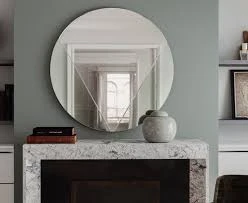

Exploring Reflective Glass Suppliers The Key to Innovative Architecture and Design
In today's fast-paced architectural world, reflective glass has emerged as a pivotal component in modern design. Its innovative capabilities, aesthetic appeal, and functional benefits make it an essential material for architects, builders, and interior designers alike. Reflective glass suppliers play a crucial role in this industry, offering a plethora of products suitable for a variety of applications. This article delves into the importance of reflective glass, the factors to consider when choosing suppliers, and the future trends shaping this dynamic sector.
Understanding Reflective Glass
Reflective glass is created by applying a thin metallic coating to standard glass, enhancing its reflective properties. This coating can be designed to reflect a significant amount of solar energy while allowing natural light to permeate through. As a result, buildings adorned with reflective glass not only boast a modern and sleek appearance but also reflect heat and light, which can lead to reduced energy consumption and improved temperature regulation within indoor spaces.
The applications of reflective glass are diverse. From office buildings that require energy efficiency to residential homes seeking a touch of elegance, reflective glass is adept at meeting various needs. Its use is widespread in curtain walls, skylights, and windows, providing both function and form. Furthermore, reflective glass can improve privacy without sacrificing daylight, making it an attractive choice for urban environments where space is premium.
Choosing the Right Reflective Glass Supplier
Selecting the right reflective glass supplier is paramount to the success of any architectural project. Several factors should be taken into account when making this decision
1. Product Range A reputable supplier should offer a wide array of reflective glass options. This includes different levels of reflectivity, colors, and thicknesses to cater to different design needs. The more choices available, the easier it is for designers to achieve their desired aesthetic.
2. Quality and Standards It is crucial to ensure that the reflective glass adheres to industry standards and quality benchmarks. Suppliers should provide certifications that guarantee the durability, safety, and sustainability of their products. High-quality reflective glass not only enhances the visual appeal of a building but also contributes to its energy efficiency.

3. Customization Options Each project is unique, and sometimes standard solutions may not suffice. A good supplier will offer customization services, allowing architects to tailor the glass specifications to meet specific design criteria or performance requirements.
4. Customer Service and Support In the construction and design industries, timelines can be tight, and support is essential. A reliable supplier should provide excellent customer service, from the initial stages of selection and ordering to delivery and installation support.
5. Sustainability Practices As the world becomes increasingly eco-conscious, suppliers that prioritize sustainability in their manufacturing processes are highly valued. Materials that are recycled, energy-efficient production methods, and environmentally friendly packaging all contribute to a supplier's reputation.
Future Trends in Reflective Glass
The reflective glass industry is evolving rapidly, influenced by advancements in technology and shifts in design preferences. One notable trend is the growing interest in smart glass, which can adapt its properties based on environmental conditions. This innovation allows buildings to optimize light and heat levels further, offering even greater energy efficiency.
Another trend is the increasing demand for aesthetics that reflect the surrounding environment. Architects seek to create structures that blend harmoniously with their surroundings, using reflective glass to mirror landscapes and urban settings. This approach not only enhances the visual cohesion of a project but also emphasizes the connection between built environments and nature.
In addition, regulatory measures focused on energy efficiency in buildings are driving the demand for reflective glass. As governments implement stricter building codes that prioritize sustainable design, reflective glass has become a go-to material for achieving compliance while maintaining artistic integrity.
Conclusion
Reflective glass suppliers are indispensable partners in the realm of contemporary architecture and design. By offering high-quality, innovative materials, they help create buildings that are not only visually stunning but also energy-efficient and environmentally friendly. As the demand for modern design continues to evolve, so too will the offerings and capabilities of reflective glass suppliers, ensuring that they remain at the forefront of architectural innovation. Choosing the right supplier is crucial for any project, and understanding the factors at play will empower architects and designers to make informed decisions that lead to successful and sustainable outcomes.